I last visited Takamatsu back in 2016 while I was walking the Shikoku Pilgrimage. It was one of the more lively cities I passed through on the island and one of its main attractions is the historic Ritsurin Garden the was completed in 1745 as a private strolling garden and villa for the local feudal lords, and opened to the public in 1875.
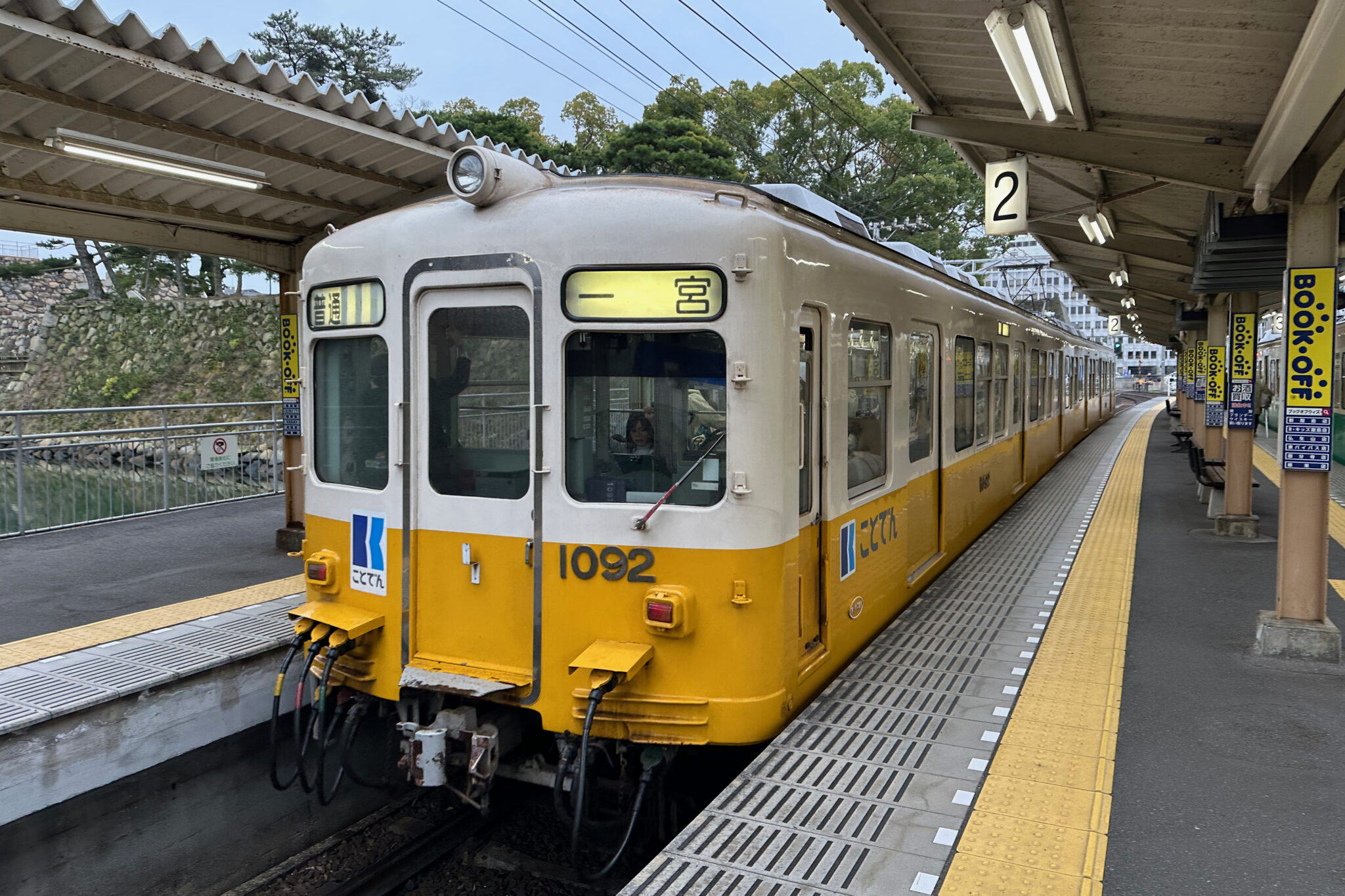
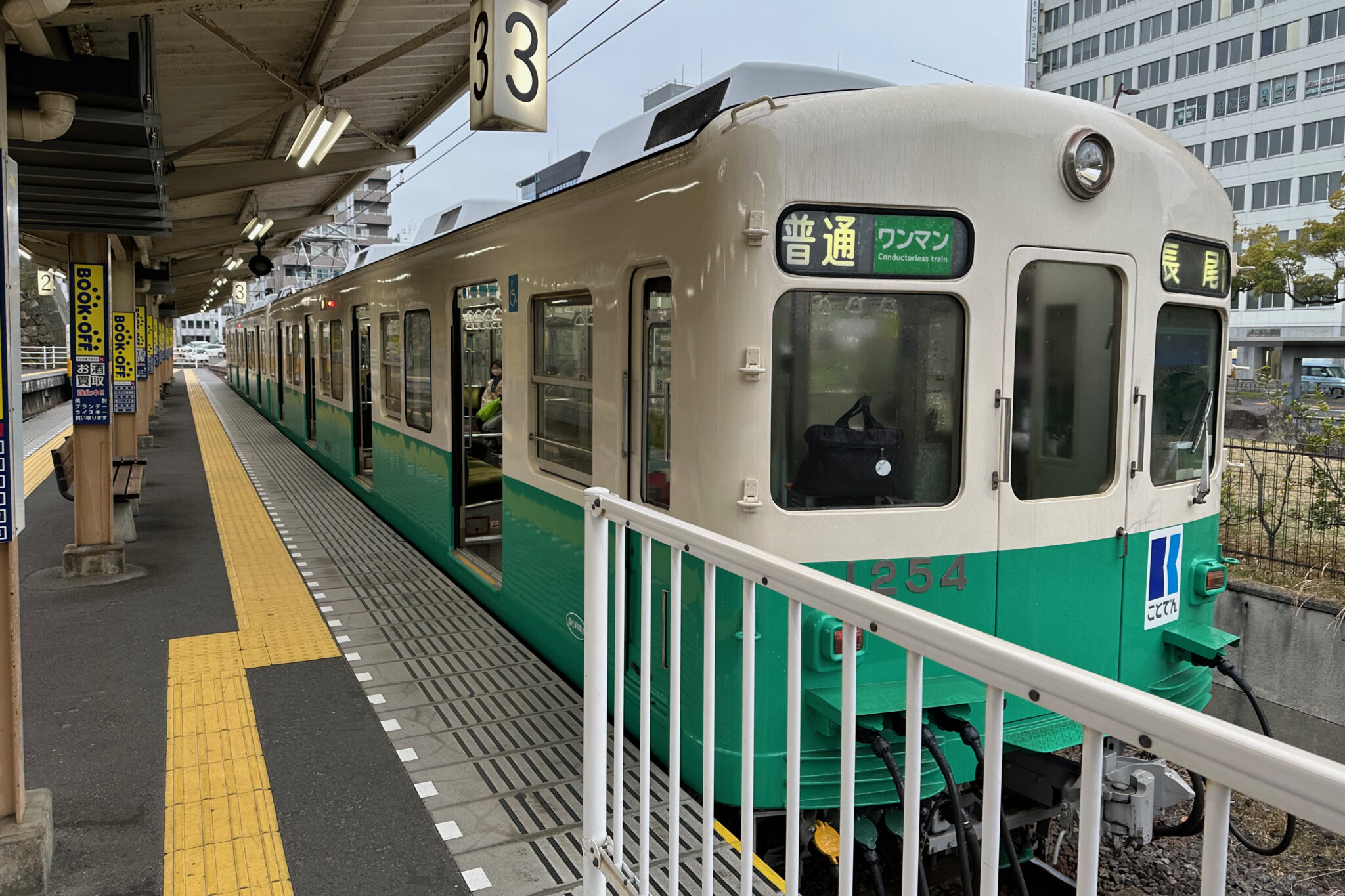
On a damp morning, we hopped on the quaint Kotoden train which, despite getting on in years, is in immaculate condition. Having inherited most of its rolling stock from different areas across Japan, Kotoden is also known as the “Moving Train Museum”.
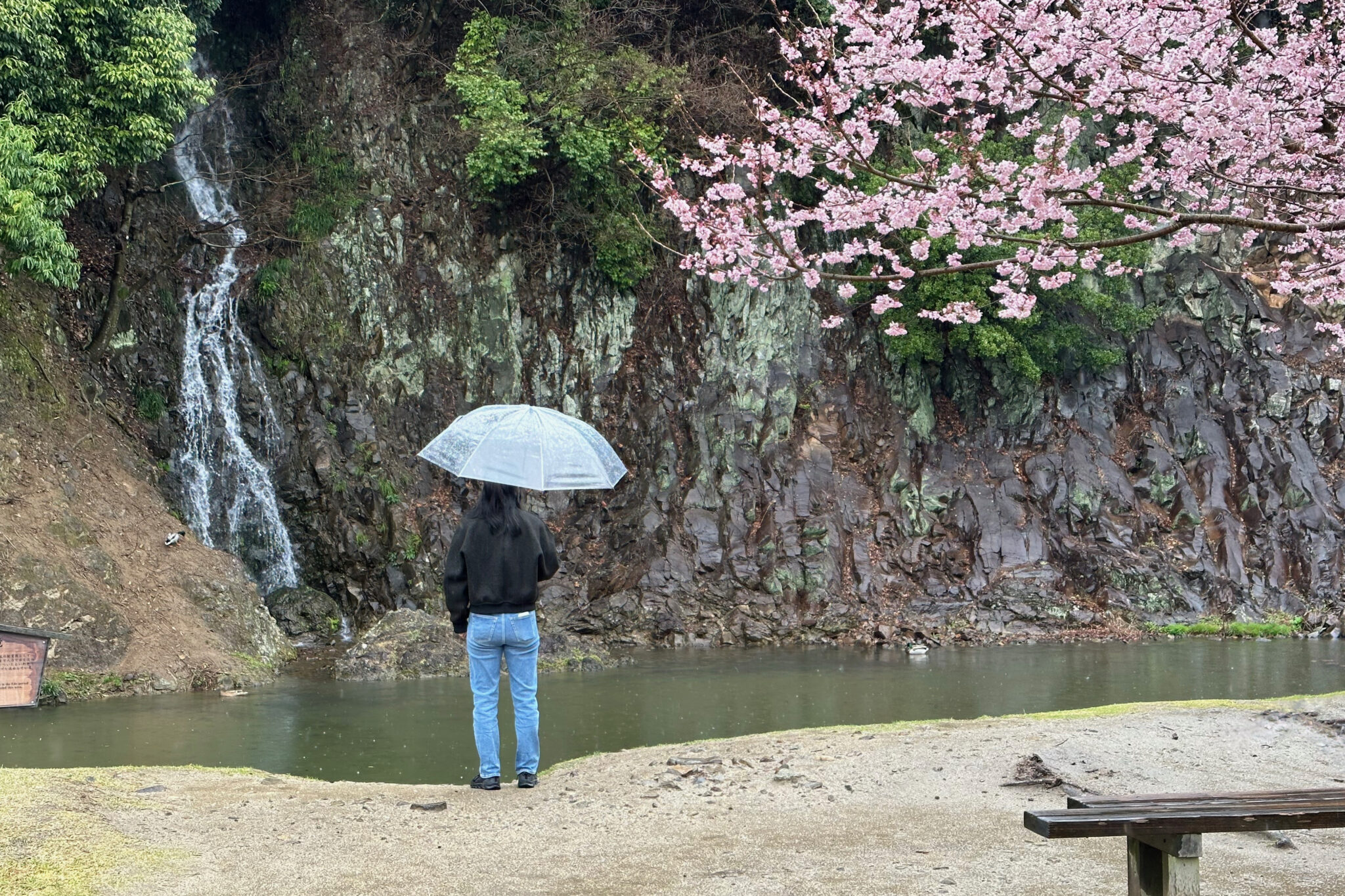
Ritsurin Garden (栗林公園) lies on the east side of Mt. Shiun (“Purple Cloud Mountain”) which is used as a backdrop to the numerous ponds and small landscaped hills that dot the garden.


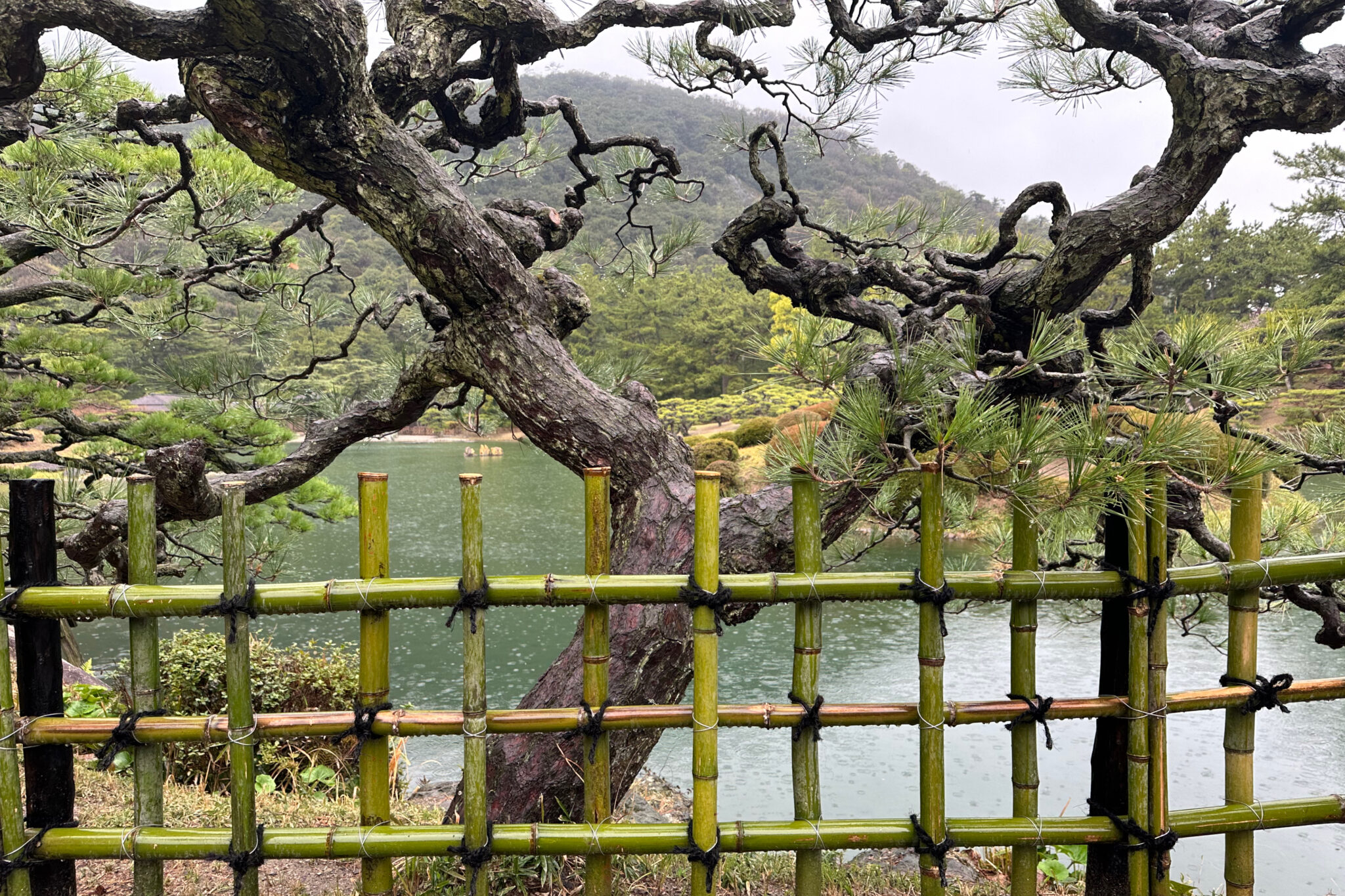
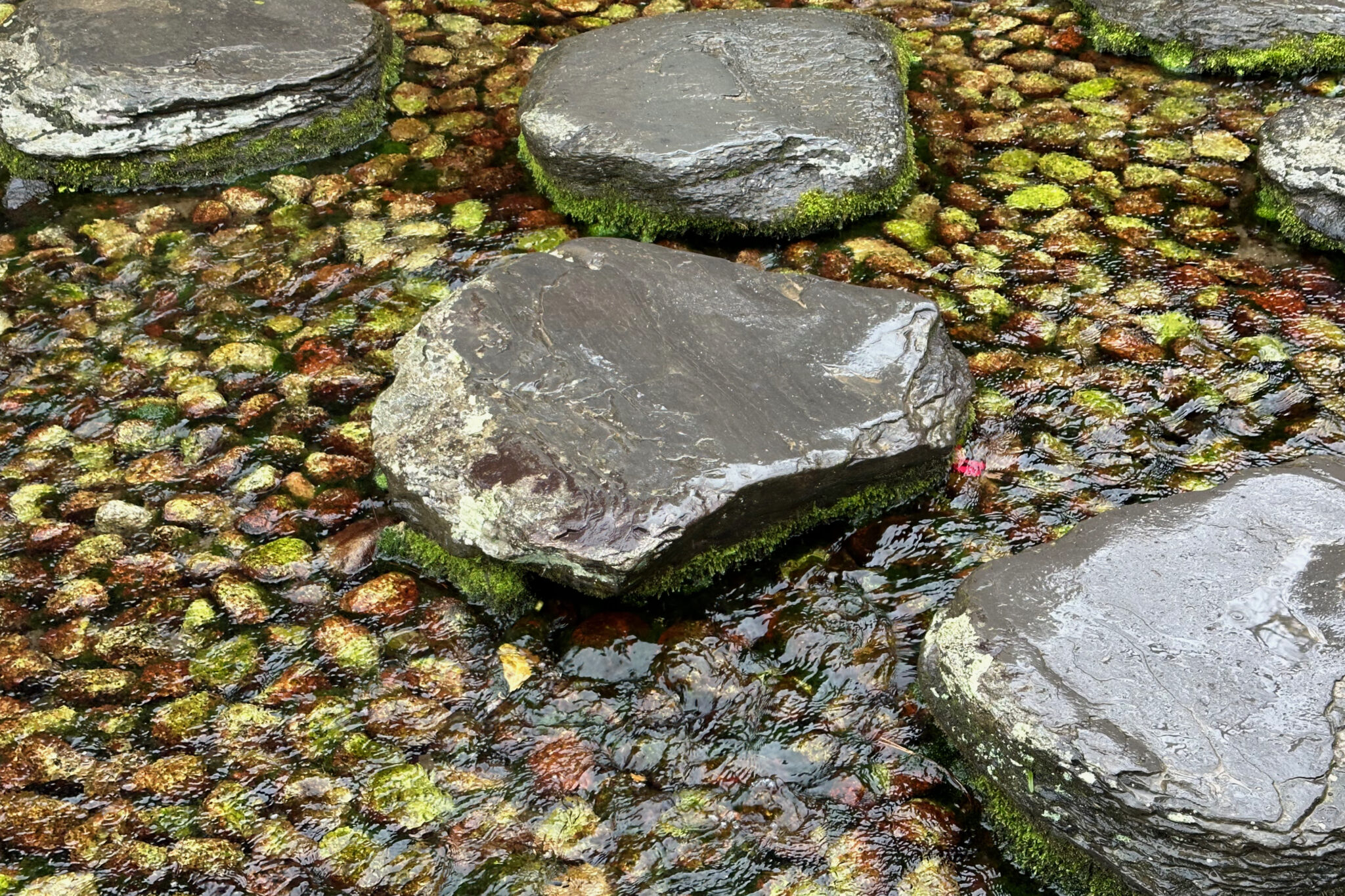
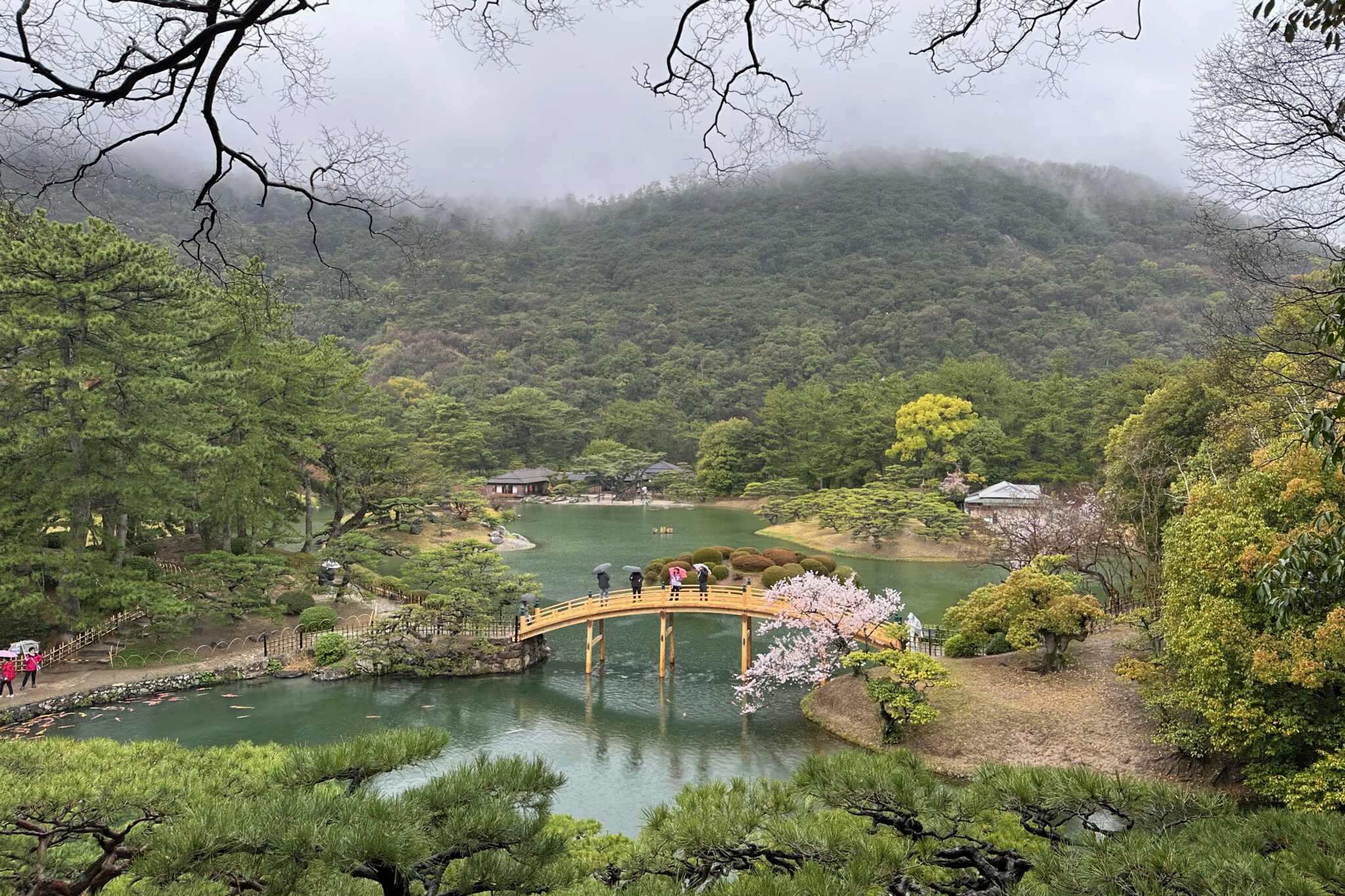
Borrowed scenery (shakkei) is the principle of integrating the natural landscape and man-made structures such as castles outside of the garden into the design of the garden.
The origins of interest in the landscape outside gardens lie in the increased travel of the Japanese elite during the Heian period (794–1185 AD), who endeavoured to bolster a national identity separate from China and display their personal wealth. When they returned from their travels they would want to physically manifest these travels at home in a more ostentatious way than could be accomplished solely with art, weapons, or ceramics.
Another example of shakkei can be seen at Murin-an in Kyoto.
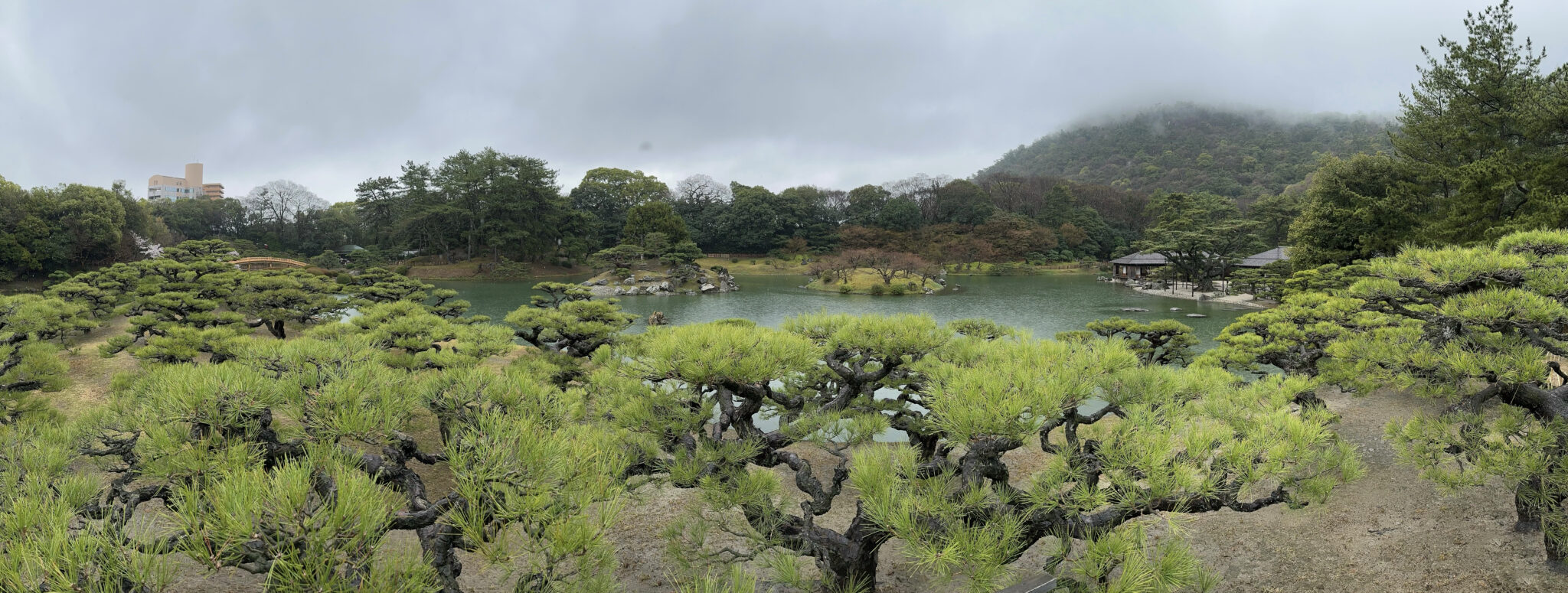
Although “Ritsurin” literally means “chestnut grove”, today, there are about 1,400 black pines in the garden carefully kept pruned by skilled gardeners for over 300 years.
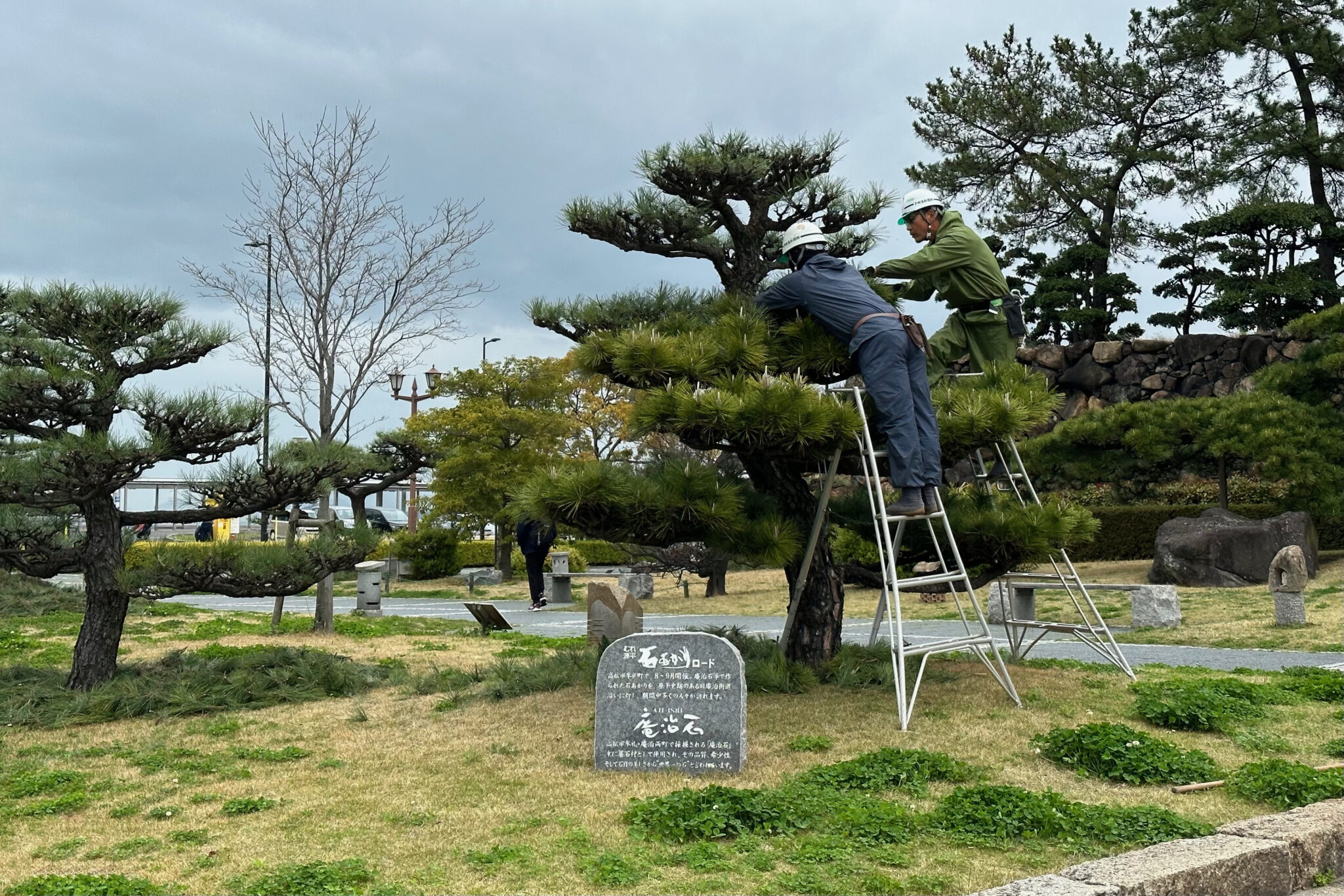
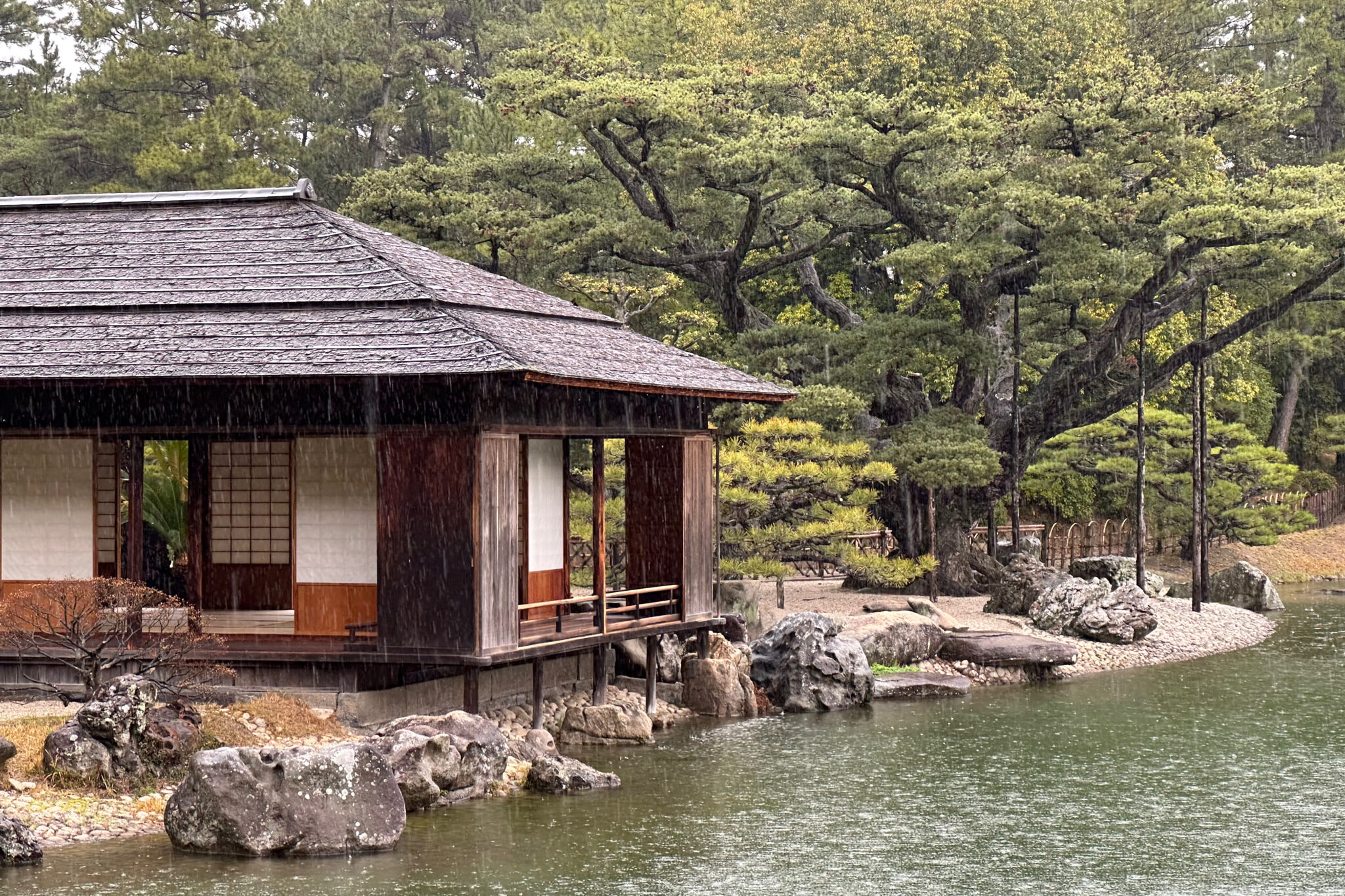
We retreated from the rain to Kikugetsu-tei Tea House whose name comes from a line in a Chinese poem from the Tang Dynasty, which reads, “When I scoop up the water, I hold the moon in my hands” alluding to the fluidity between interior and exterior.

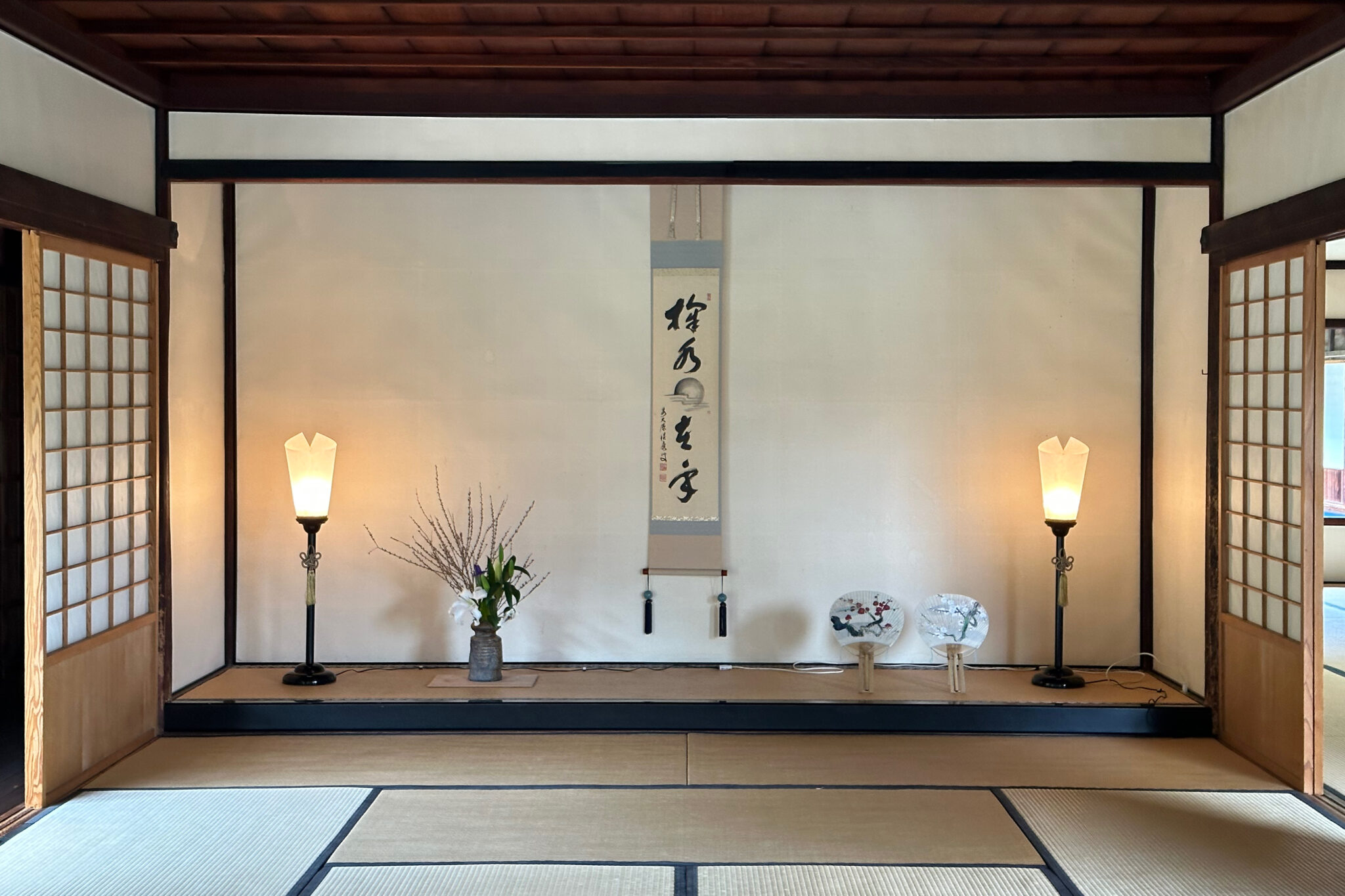
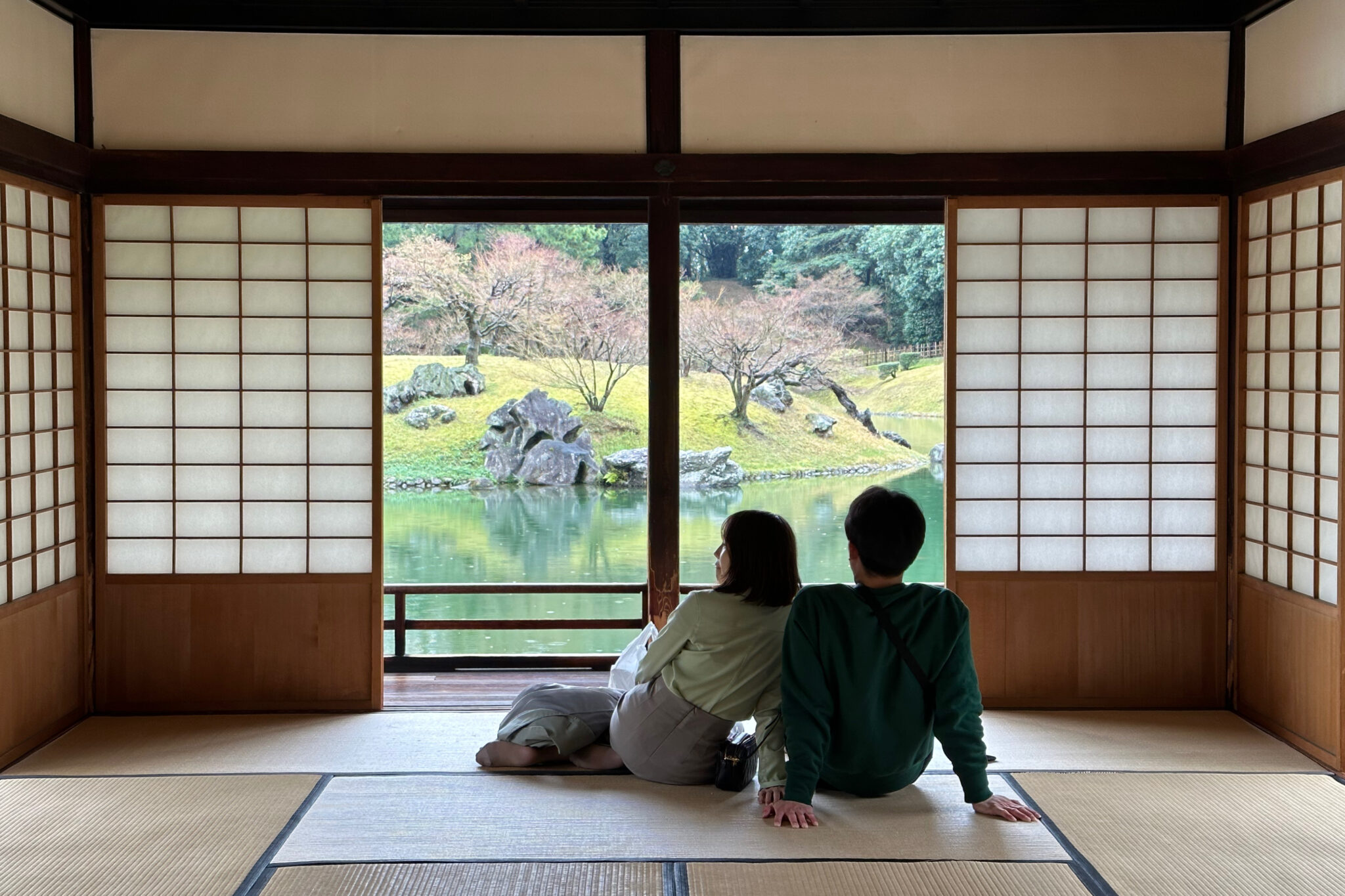
Even on a wet day, it’s well worth taking a stroll through the spacious park.

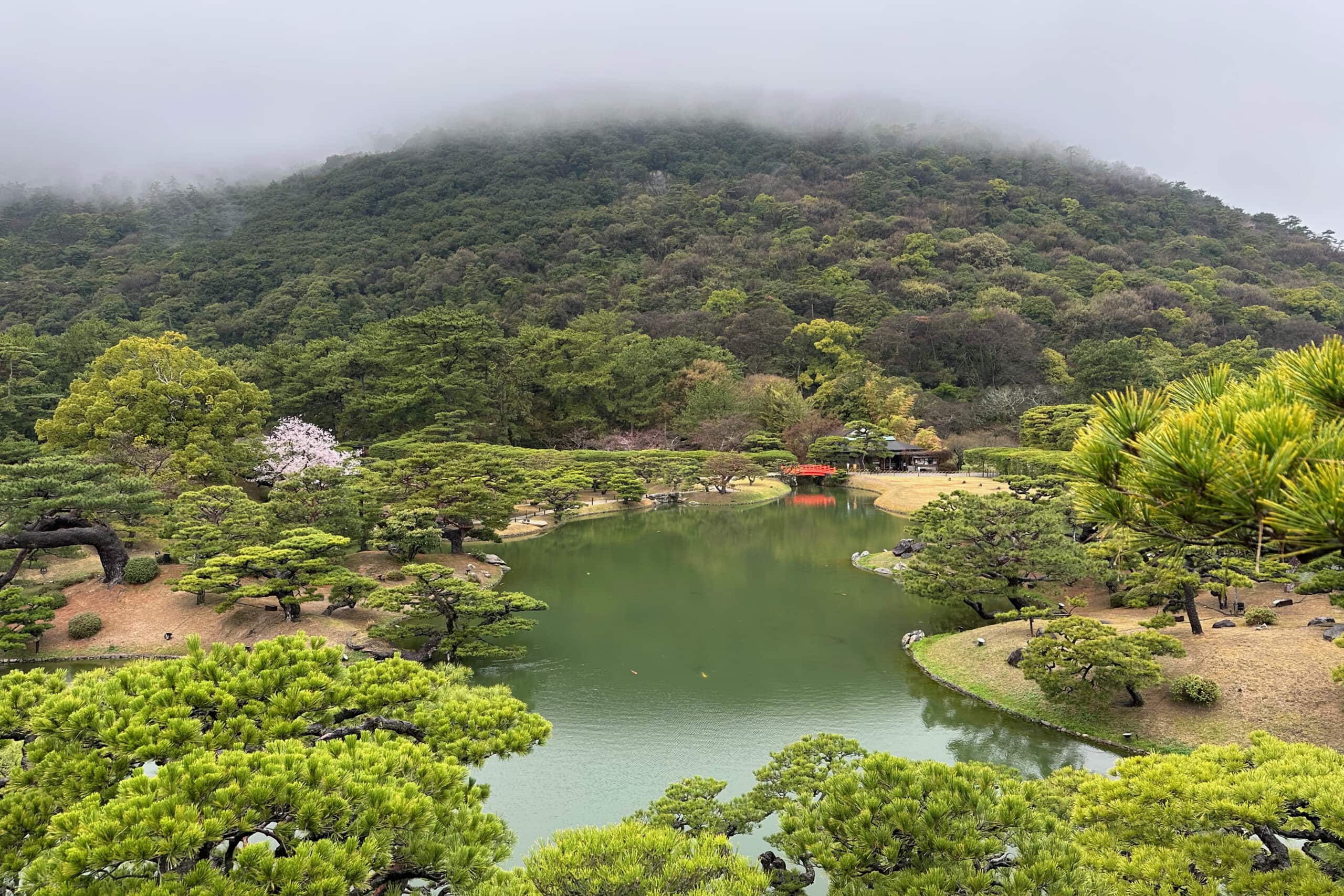
Reply